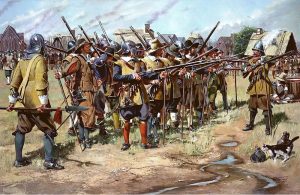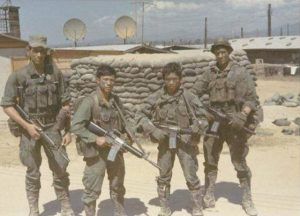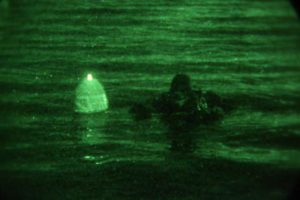
We all hear about them on the news: Those places where Soldiers, Sailors, Airmen and Marines are housed and trained; where they form up to deploy to some remote space on a map that most of us had never heard of a week ago…
But — what is a ‘base’, exactly?
Here at The Freedomist, we covered one aspect of this question some time ago, but this article will take a broad overview of the question at large.

Aside from castles or fortresses, “bases” come in a vast array of forms. Certain histrionics aside, a “military base” can come in almost literally any form. There are massive bases, such as Fort Bliss, in Texas or the Naval Air Weapons Station, China Lake, which are larger than some states, but there are also tiny installations that are also bases, such as Marine Barracks, Washington D.C., which is a mere 6 acres (2.4 ha) in size, and has been in continuous use since 1801. As a result, a base can take almost any shape.
At the same time, size comparisons obscure the question. A different way to think about a “generic” base, however, would be to consider it as a collection of components. Generally speaking, a “base” – while it may have a specific purpose – is where troops can be housed and trained for combat; where they can do at least basic levels of maintenance on weapons and equipment; and where supplies sufficient for a unit to deploy (in theory) can be safely and securely stored.

The training component is the hard part here, because even with the many advances in “virtual” training that have taken place in the last thirty-odd years, troops still need to actually fire live ammunition thought their weapons; short of actual nuclear, biological and chemical weapons, nothing focuses training like the dangers of live-fire. When we are dealing with classes of personal weapons, firing ranges of fifty to five hundred yards or meters in length may well be sufficient. Once we move into longer-ranged weapons – heavy machine guns, mortars, rockets, tank cannons and actual artillery – the ranges quickly become very long range.
But…short of that? Let’s do a thought experiment.
We will start with a large open field. A road, perhaps a highway or freeway, runs along one side of the field. Imagine one to four multi-story motels, clustered together; nearby, is a small, two-story office building. To one side, there is a gas/convenience station, and a large chain-style restaurant. There are one or two warehouses, a full-service garage, a few large parking lots filled (hopefully) with large and heavy vehicles. There are a scattering of other buildings, including one that is very “blockish”-looking building surrounded with barbed wire; there might even be a fire station. There is likely a shooting range, one hundred to five hundred yards/meters in length. If the unit’s home nation is relatively wealthy – and wise – there may be a small housing development across the road from the actual base, with family homes for married troop’s whose families live with them. None of the buildings are very “upscale”; most would be described with uncharitable snobbery as “drab” or even “ramshackle” or “brutalist” if someone wanted to be nasty. That would be the effect of government contracting restrictions.

What was just described above are the very basic facilities for an infantry battalion of 700-1,000 troops. There would be a few more buildings if the unit is more specialized, but the above description represents a generic enough core. Drop, say, another dozen or so of these areas close together, add an actual hospital, a large supermarket nestled next to a department store (if they’re not combined), a branch bank, a few more gas stations and regional-scale airport that can handle C-130-type aircraft, a few very long-distance (say, two to five miles in range) and you have a base suitable for a brigade-to-division scale unit – anything from eight to sixteen thousand troops.
Reserve or militia units can get away with one or two buildings, with a large and fenced-off parking lot, as long as they keep personal weapons and a basic load or two of ammunition at home…However, these units are going to be extremely limited in what operations they can carry out.
In sum, most military bases are not too dissimilar from a small town – except, of course, for the weapons, uniforms and intent. Aside from the occasional museum, most military installations /are/ drab, dreary and uninviting, and not places most people would want to live in for very long. But that dividing line, that willingness to tolerate minimalist living environments because their belief in the greater good, is best described in a paraphrase of the words of neoconservative essayist and film critic Richard Grenier —








